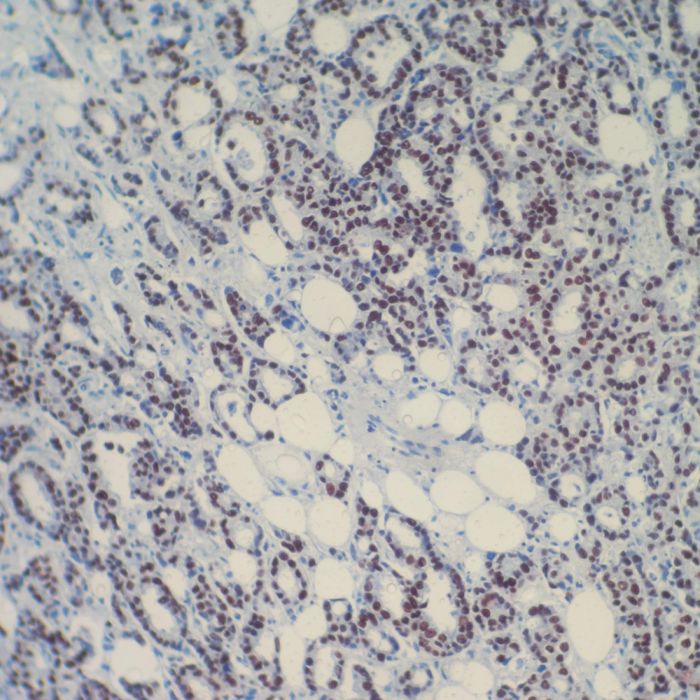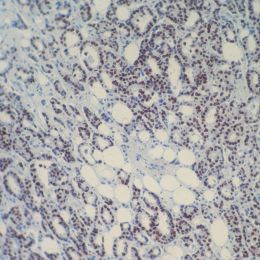HOPE® Fixative System I
HOPE® Formalin-free fixation technique for molecular pathology and research.
Tissue conservation using the HOPE® technique provides paraffin embedded tissue blocks with native structure of the macro-molecules (protein, DNA, RNA) in the tissue.(Hepes-Glutamic acid buffer mediated Organic solvent Protection Effect)
During HOPE® fixation, tissue samples are sequentially incubated in HOPE® I and HOPE® II solutions, followed by a dehydration with acetone and subsequent paraffin embedding. No alcohols or aldehydes (formalin, glutaraldehyde) are used in this tissue processing method. As a consequence, there is no cross linking of macromolecular structures during the process. This opens up new opportunities to characterize tissues out of paraffin blocks.
Applications for immunohistochemistry, in situ hybridization targeting RNA and DNA, PCR and RT-PCR have been demonstrated using properly prepared paraffin embedded tissue sections. Tissue specimens fixed with the HOPE® technique allow greater morphology and retrospective studies on the molecular level.
The HOPE® Fixation technique requires both HOPE® Fixative System I and HOPE® Fixative System II to complete the protocol.
Applications:
- PCR
- RT-PCR
- Immunohistochemistry
- In situ hybridization targeting RNA and DNA
Benefits:
- Achieve IHC on paraffin tissue without antigen unmasking
- IHC using antibodies which do not work on formalin fixed parafffin embedded tissue
- No more overfixed formalin tissue samples
- Unmatched results in RNA and DNA in situ hybridization
- Excellent conservation of nucleic acids for PCR and RT-PCR
Olert, J., Wiedorn, K. H., Goldmann, T., & Kuhl, H. (2001). HOPE fixation: a novel fixing method and paraffin-embedding technique for human soft tissues. Pathology, research and practice, 197(12), 823.


